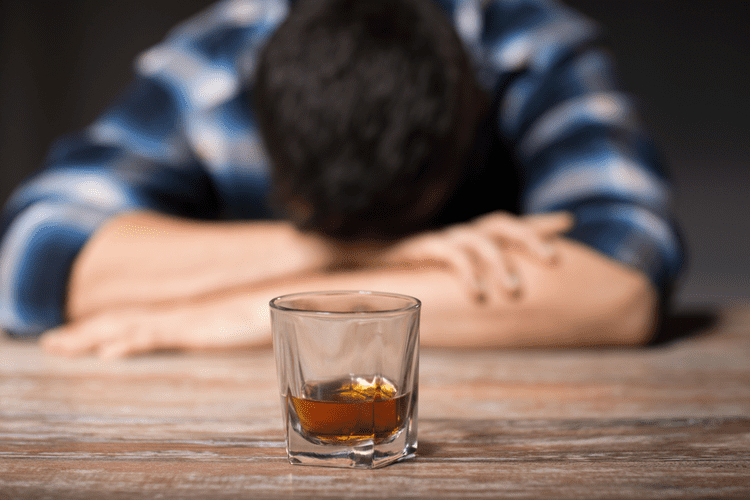Superoxide productions through NADPH oxidase activation (p22phox expression) has been demonstrated in rats made hypertensive with angiotensin II infusion[84]. Chronic ethanol ingestion induces hypertension which is correlated with elevated tissue angiotensin II levels, and activation of NADPH oxidase activity causing endothelial injury in rats[62,79,80]. It is possible that alcohol ingestion raises the blood pressure by decreasing the vasodilators such as NO in the vascular endothelium either due to inhibition of endothelial nitric oxide synthase (eNOS) or inflammatory/oxidative injury to the endothelium. Earlier studies have also shown that chronic ethanol consumption either interferes with NO production or release of NO from endothelial cells[80,85-87].
- Moderate to heavy drinkers can also benefit from medical supervision in the acute withdrawal stage.
- Based on nine studies, McFadden 2005 reported that the mean increase in SBP was 2.7 mmHg and in DBP was 1.4 mmHg.
- Most studies gave participants 15 to 30 minutes to finish their drinks, started measuring outcomes sometime after that, and continued taking measurements for a certain period, but there were some exceptions.
- About 20% of observations were missing, and these were assumed to be random.
We followed the same formulae for combining groups if a study reported two different types of alcoholic beverages containing the same amount of alcohol. If you already have alcohol use disorder, it’s important to seek counseling and medical care as soon as possible. The goal is to safely and gradually decrease your dependence on alcohol so that you can resume your daily life. AWS is more common in adults, but children and teenagers who drink excessively may also experience the symptoms. You’re also at risk for AWS if you’ve previously had withdrawal symptoms or needed medical detox for a drinking problem. On assessing the relationship between BP values and severity of alcohol abuse, cigarette smoking, anxiety, and depression, only a correlation between BP and years of at-risk drinking and AWS severity was slot88 found.
Mizushima 1990 published data only
Stratified analyses were run with age dichotomized at the median and ethnicity stratified as African American or non-African American. These analyses were adjusted for the other demographic factors (e.g., analyses by age group were adjusted for gender and ethnicity). Despite statistically significant interactions, the relationship between PDD and systolic blood pressure was clinically similar regardless of gender, and reduction in systolic BP was only slightly greater in older subjects.

In these persons, the average reduction in systolic pressure was 12 mm Hg, and the average reduction in diastolic pressure was 8 mm Hg. More generally, due to the dependence of blood pressure reduction on the baseline, those with the highest initial pressure experienced the greatest reduction. This finding is consistent with prior research suggesting that only about half of heavy drinkers experience a pressor effect [4, 7], most of whom will experience blood pressure reduction with reduced drinking.
Understanding Hypertension
If you are experiencing severe alcohol withdrawal symptoms, seek medical attention immediately. We planned on conducting sensitivity analyses on studies based on their level of risk of bias (high‐risk studies versus low‐risk studies). Most of the included studies had similar risk of bias across all domains except for performance bias and detection bias, for which risk arises from blinding of participants, personnel, and outcome assessors. So, we decided to conduct a sensitivity analysis of the included studies based on the blinding condition (Table 7).
This is known to provide a good approximation of the SD of change in BP so is unlikely to lead to bias. Also, only 10 out of 32 studies reported changes in MAP after alcohol consumption along with SE/SD (Buckman 2015; Dumont 2010; Foppa 2002; Karatzi 2005; Karatzi 2013; Kojima 1993; Maufrais 2017; Maule 1993; Narkiewicz 2000; Van De Borne 1997). So, we had to calculate missing MAP values from reported SBP and DBP values using the formula mentioned in the protocol and we imputed the SE/SD for those. Hence, we conducted additional analyses to see if the very high dose of alcohol (≥ 60 g or ≥ 1 g/kg) had any dose‐related effects compared to lower high doses of alcohol (31 to 59 g of alcohol) (see Table 9). Results suggest that the decrease in BP with very high doses of alcohol is greater compared to lower high doses of alcohol.
deLorenzo 1988 published data only
Ratings of the certainty of evidence ranged from moderate to low in this review, which suggests that the effect estimates of alcohol might be slightly different than the true effects. For high doses of alcohol, we found moderate‐certainty evidence showing a decrease in SBP and low‐certainty evidence suggesting a decrease in DBP within the first six hours and 7 to 12 hours after consumption. Moderate‐certainty evidence shows that SBP and DBP rise between 13 and 24 hours after alcohol ingestion.
She specializes in a variety of health topics including mental health, dementia, celiac disease, and endometriosis. Behavioral health treatment for alcohol problems is often (but not always) covered by insurance. In the United States, most states have low-cost or free rehabilitation programs for those who are uninsured. For people at low risk of complications, an office visit to your primary care provider, along with at-home monitoring and virtual office visits, may suffice. People at high risk of complications should enter a short-term in-patient detox program.
Bleich 2001 published data only
If a person thinks that they might be consuming alcohol at a rate that would classify as moderate drinking, heavy drinking, or binge drinking, they should consider cutting back to improve their overall health and well-being. Completely refraining from consuming alcohol lowers the risk of some of the health risks listed above. Although some of those effects can occur without alcohol consumption, avoiding alcohol helps alcohol lowers blood pressure decrease the risks. We identified Stott 1987 and Barden 2013 from Analysis 3.1 and Analysis 3.2 as having a considerably lower standard error (SE) of the mean difference (MD) compared to the other included studies. Assuming that the low SEs of MDs reported in Stott 1987 and Barden 2013 are errors and are not reliable, we replaced these measures with the average SE of MD from the rest of the included studies.











